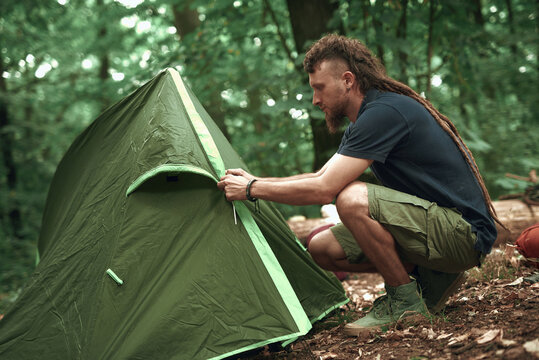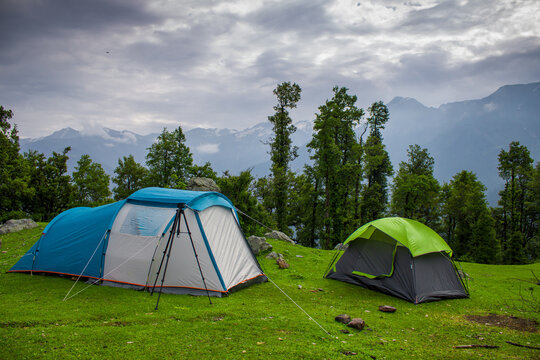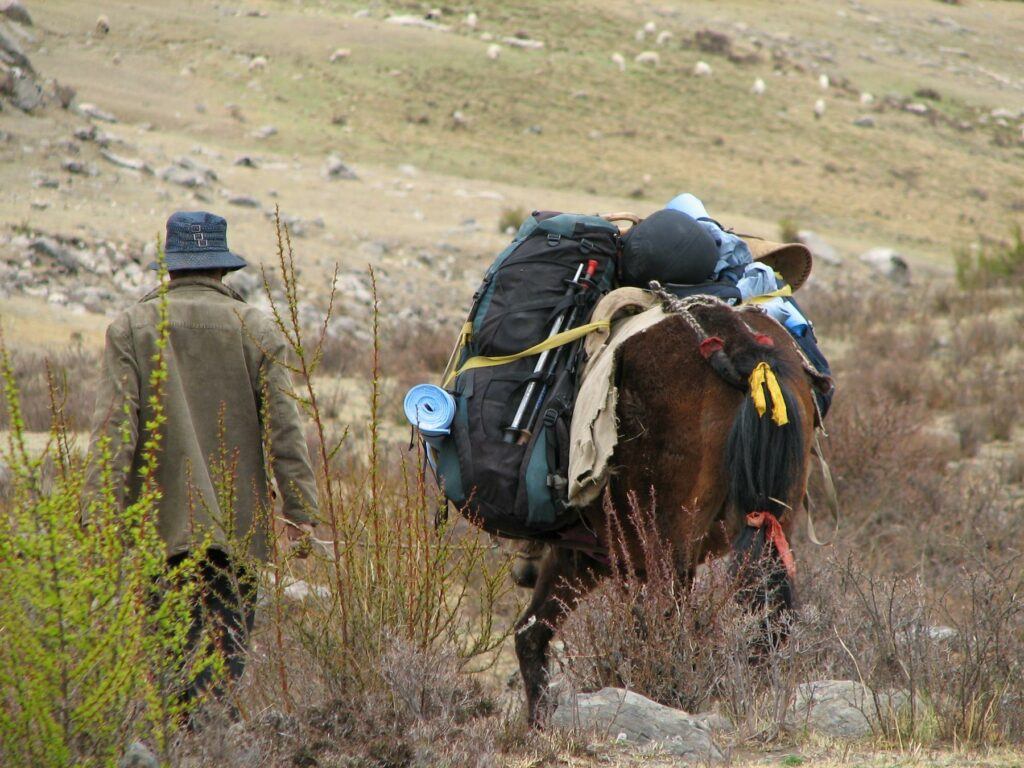Introduction
Eco-friendly camping equipment is gear that has been thoughtfully designed and produced with the environment in mind. It is created with the goal of minimizing the environmental impact of camping activities, allowing us to enjoy the great outdoors without causing harm to the environment.
Eco-friendly camping equipment can take many forms, from tents and sleeping bags made from recycled materials to solar-powered portable chargers and reusable camping stoves. The common thread between these items is that they are produced in a way that minimizes waste, pollution, and resource consumption.
By choosing eco-friendly camping equipment, you can reduce your carbon footprint and contribute to a more sustainable future. In the following sections, we will explore the benefits of eco-friendly camping equipment, provide tips for choosing and disposing of gear responsibly, and highlight some of the top eco-friendly camping gear brands and destinations.

Benefits of Eco-Friendly Camping Equipment
Eco-friendly camping gear offers numerous benefits, particularly for the environment. The primary advantage of using eco-friendly camping equipment is that it helps reduce waste. Using products made from recycled materials or those that can be recycled at the end of their lifecycle can minimize the amount of waste that ends up in landfills. Moreover, eco-friendly camping products are often designed to be reusable, which can reduce the amount of waste generated over time.
Another benefit of eco-friendly camping equipment is that it helps conserve resources. Many eco-friendly camping products are made using renewable energy sources, which reduces the amount of non-renewable resources used during production. Additionally, eco-friendly products are often designed to be more energy-efficient, reducing your carbon footprint.
Eco-friendly camping equipment can also help minimize pollution. Traditional camping products, like disposable cutlery and single-use plastic water bottles, can generate a lot of waste and contribute to pollution. Using eco-friendly alternatives can help reduce the amount of pollution generated, thereby making camping a more sustainable activity.
By using eco-friendly camping equipment, you can help protect the environment while enjoying your camping trip.
How to Choose Eco-Friendly Camping Gear
Choosing eco-friendly camping gear can be an exciting and rewarding experience. It allows you to enjoy the great outdoors while also minimizing your environmental impact. Here are some tips and guidelines to help you choose the right gear:
1. Look for products made from recycled materials
Many eco-friendly camping products are made from materials that have been recycled, such as recycled plastic or recycled fabric. These products are a great choice because they help to reduce waste and conserve resources. When shopping for eco-friendly camping gear, look for products that have been certified by recognized organizations such as Global Recycle Standard (GRS) or Recycled Claim Standard (RCS).
2. Choose products that use renewable energy
Many eco-friendly camping products are made using renewable energy sources, such as solar or wind power. These products are a great choice because they help to reduce your carbon footprint. Look for products that have been certified by recognized organizations such as the Forest Stewardship Council (FSC) or the Rainforest Alliance.
3. Look for products that are designed to have a minimal environmental impact
Many eco-friendly camping products are designed to be more energy-efficient and to generate less waste than traditional products. Look for products that are designed to be reusable, durable, and long-lasting. Products that are designed to be repaired or upcycled are also a great choice. When shopping for eco-friendly camping gear, look for products that have been certified by recognized organizations such as the Bluesign system or the Cradle to Cradle Certified program.
By choosing eco-friendly camping gear, you can enjoy the great outdoors while also minimizing your environmental impact.

Top Eco-Friendly Camping Gear Brands
Eco-conscious campers have a variety of options when it comes to selecting sustainable gear. Here are some of the top eco-friendly camping gear brands to consider:
1. Patagonia
Patagonia is a reputable brand that offers a wide range of eco-friendly camping products, including tents, sleeping bags, and backpacks. The company is committed to using sustainable materials and reducing waste. Additionally, Patagonia is a B Corp, meaning that it meets high standards of social and environmental performance, accountability, and transparency.
2. REI
REI is another popular brand that offers a dedicated line of sustainable products for eco-friendly campers. Their sustainable camping gear is made from recycled materials and designed to be energy-efficient. REI also has a rigorous sustainability program that includes reducing their carbon footprint and supporting environmental stewardship.
3. NEMO Equipment
NEMO Equipment is a newer brand that offers a range of eco-friendly camping gear, including tents, sleeping bags, and backpacks. The company is committed to using sustainable materials and reducing waste. Additionally, NEMO Equipment partners with Leave No Trace, a nonprofit organization that promotes responsible outdoor ethics and sustainability.
4. Big Agnes
Big Agnes is a company that offers a variety of eco-friendly camping products, including tents, sleeping bags, and backpacks. Their products are designed to be sustainable and long-lasting, with a focus on reducing waste. Additionally, Big Agnes is a member of 1% for the Planet, meaning that they donate 1% of their annual sales to environmental causes.
5. Marmot
Marmot is a brand that offers a wide range of eco-friendly camping products, including tents, sleeping bags, and backpacks. The company is committed to using sustainable materials and reducing waste. Additionally, Marmot has a comprehensive sustainability program that includes reducing their carbon footprint and using recycled materials in their products.
When selecting eco-friendly camping gear, it’s important to consider the brand’s values and commitment to sustainability. These top brands offer high-quality, durable products that are designed with the environment in mind.

Eco-Friendly Camping Gear Reviews
If you’re looking for eco-friendly camping gear, here are some detailed reviews of top products to consider:
Tents
- Big Agnes Copper Spur HV UL: Made from recycled materials, this tent is designed to be lightweight and easy to set up. It has plenty of space for two people and is a great choice for backpacking trips.
- Marmot Tungsten UL: Made from sustainable materials, this tent is designed to be durable and long-lasting. It has a spacious interior and is a great choice for car camping trips.
Sleeping Bags
- The North Face Eco Trail Bed: Made from recycled materials, this sleeping bag is designed to be warm and comfortable. Its unique shape allows for plenty of movement and is a great choice for cold nights.
- Sierra Designs Backcountry Bed: Made from sustainable materials, this sleeping bag is adaptable to different conditions. Its unique design allows for easy movement and is a great choice for backpacking trips.
Backpacks
- Osprey Atmos AG 50: Made from sustainable materials, this backpack is designed to be comfortable and easy to carry. It has plenty of space for all your gear and is a great choice for backpacking trips.
- Deuter ACT Lite 50+10: Made from recycled materials, this backpack is designed to be durable and long-lasting. It has plenty of pockets and compartments for organization and is a great choice for longer trips.
When choosing eco-friendly camping gear, it’s important to consider the materials used in each product. By opting for gear made from recycled or sustainable materials, you can reduce your environmental impact while still enjoying your outdoor adventures.
How to Dispose of Old Camping Gear
As you prepare to retire your old camping gear, it’s crucial to dispose of it in an environmentally responsible way. Here are some tips on how to do so:
1. Recycle
Recycling is an excellent way to ensure that your old camping gear doesn’t end up in a landfill. Many camping products, such as tents and sleeping bags, can be recycled. Check with your local recycling program to see if they accept camping gear made from synthetic materials.
2. Donate
If your camping gear is still in good condition, consider donating it to a local charity or secondhand store. Doing so can help extend the life of your camping gear and reduce the demand for new gear to be produced.
3. Repurpose
If your camping gear is no longer usable for its original purpose, consider repurposing it. For example, an old tent could be used as a cover for a garden bed. You can also use old sleeping bags as padding for a pet’s bed, or even as insulation in your home. The possibilities are endless, so get creative!
By following these tips, you can help minimize your environmental impact and ensure that your old camping gear is disposed of in an eco-friendly manner.

Eco-Friendly Camping Destinations
Exploring the great outdoors is always a great adventure, but it is important to also consider the impact we are having on the environment. Luckily, there are many eco-friendly camping destinations around the world that allow us to enjoy nature while also protecting it. Here are some tips for minimizing your environmental impact while camping in these areas:
1. Follow Leave No Trace principles
The Leave No Trace principles are a set of guidelines that encourage campers to minimize their impact on the environment. These principles include packing out all trash, minimizing campfire impact, and respecting wildlife. By following these principles, you can help ensure that these beautiful natural areas remain pristine for future generations to enjoy.
2. Use reusable containers
Instead of using disposable plates and cutlery, bring reusable containers and utensils. This not only reduces waste but also saves you money in the long run. Consider investing in a set of camping dishes and utensils that can be used over and over again.
3. Minimize your use of water and energy
Using solar-powered lights and a portable solar charger is a great way to minimize your use of energy. You can also use biodegradable soap and minimize your use of water by taking quick showers and using water-saving techniques when washing dishes. By being mindful of your energy and water usage, you can help reduce your impact on the environment while still enjoying your camping trip.
4. Choose eco-friendly campgrounds
When choosing a campground, look for one that is committed to sustainability and eco-friendliness. Many campgrounds now offer recycling programs, composting, and other environmentally conscious initiatives. Choosing an eco-friendly campground not only helps protect the environment but also supports businesses that are committed to sustainability.
5. Explore sustainable activities
Consider exploring sustainable activities while camping, such as hiking, birdwatching, or fishing with a catch-and-release policy. These activities allow you to connect with nature in a meaningful way while also minimizing your impact on the environment.
By following these tips, you can enjoy your camping trip while also being mindful of the impact you are having on the environment.
Tips for Reducing Your Environmental Impact While Camping
Camping is a great way to enjoy the outdoors, but its important to be mindful of our impact on the environment. Here are some tips to help reduce your environmental impact while camping:
1. Bring a refillable water bottle
Instead of using single-use plastic water bottles, bring a refillable water bottle. This will not only reduce the amount of plastic waste you generate, but it will also save you money in the long run. If youre camping in an area with a water source, consider bringing a water filter or purification tablets to ensure that the water is safe to drink.
2. Pack out all trash
Make sure to pack out all trash, including food waste and toilet paper. This means bringing a trash bag with you and taking all your waste with you when you leave. Leaving trash behind can harm wildlife and the environment. If youre in an area without facilities, make sure to bury your waste at least 6-8 inches deep and 200 feet away from any water sources.
3. Consider using a composting toilet
If you’re camping in an area without facilities, consider using a composting toilet to minimize your impact on the environment. Composting toilets use natural processes to break down waste, reducing the amount of pollution and waste generated by traditional toilets. If youre not comfortable using a composting toilet, make sure to bury your waste at least 6-8 inches deep and 200 feet away from any water sources.

How to Make Your Own Eco-Friendly Camping Gear
In addition to buying eco-friendly camping gear, you can also make your own gear using sustainable materials. Not only is this a fun and rewarding activity, but it also reduces your environmental impact by reusing and recycling materials. Here are some instructions for making your own solar-powered portable charger:
Materials:
- Small solar panel
- USB battery pack
- Soldering iron
- Wire cutters
- Electrical tape
- Small project box
- Heat shrink tubing
- Double-sided tape
Instructions:
- Cut the USB cable in half and strip the wires.
- Connect the positive wire from the solar panel to the positive wire from the USB cable and the negative wire from the solar panel to the negative wire from the USB cable.
- Use electrical tape to cover the connections.
- Solder the other end of the USB cable to the USB battery pack. Make sure to connect the positive and negative wires correctly.
- Insert the USB battery pack and the solar panel into a small project box.
- Use double-sided tape to attach the solar panel to the top of the project box.
- Use heat shrink tubing to cover the exposed wires.
- Charge the battery pack by placing the solar panel in direct sunlight.
By making your own eco-friendly camping gear, you not only save money, but you also reduce your carbon footprint. This is just one example of the many things you can make to reduce your environmental impact while camping.
Conclusion
In summary, eco-friendly camping equipment is an excellent way to enjoy nature while minimizing your environmental impact. By using products made from sustainable materials, minimizing waste, and reducing pollution, you can help reduce your carbon footprint and protect the environment. With the growing awareness of the critical need to protect our planet, it’s time to make eco-friendly camping gear a priority on your next trip.
But it doesn’t end there! We have a wealth of other content that can help you make environmentally conscious choices in your daily life. Check out our other articles on sustainable living, eco-friendly travel, and more to learn how you can make a difference in the world. Let’s work together to create a sustainable future for everyone.
Common Questions
What is eco-friendly camping equipment?
Eco-friendly camping equipment is gear made with the environment in mind, designed to minimize waste and pollution.
Who should use eco-friendly camping equipment?
Anyone who loves camping and wants to protect the environment should consider using eco-friendly camping gear.
How do I choose eco-friendly camping gear?
Look for products made from recycled or sustainable materials, and those that are energy-efficient and designed to last.
What if eco-friendly camping gear is more expensive?
While some eco-friendly camping gear may be more expensive upfront, it can save you money in the long run and protect the environment.
How do I dispose of old camping gear?
Consider recycling or donating old camping gear to reduce waste and extend the life of the product.
What are some top eco-friendly camping gear brands?
Patagonia, REI, NEMO Equipment, Big Agnes, and Marmot are all top brands committed to sustainability and eco-friendliness.
As an avid camper and environmentalist, the author has spent years researching and testing various eco-friendly camping equipment. With a degree in Environmental Science and experience working for a non-profit organization focused on sustainability, the author has a deep understanding of the impact that camping can have on the environment. Additionally, the author has conducted research on the benefits of eco-friendly camping gear and their impact on reducing waste and conserving resources. Through this experience and knowledge, the author is able to provide valuable insights and recommendations for those looking to go green on their next camping trip.

